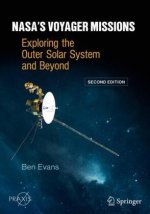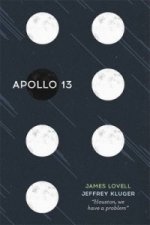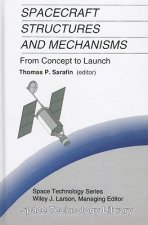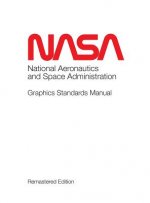
Kód: 01427692
Encyclopedia of Planetary Landforms
Autor Henrik Hargitai, Ákos Kereszturi
The technique of the mapping of planetary surfaces and the methods used for the identification of various planetary landforms improved much in the last 400 years. Until the 20th century, telescopic observers could interpret planet ... celý popis
- Jazyk:
 Angličtina
Angličtina - Vazba: Pevná
- Počet stran: 1100
Nakladatelství: Springer, Berlin, 2014
- Více informací o knize

Mohlo by se vám také líbit
-

Exploring Journalism and the Media
3422 Kč -

Diffusion-Weighted MR Imaging of the Brain
5044 Kč -

Mary Rose of Mifflin
1300 Kč -

Geheimnisschutz und Auskunftsanspruche im Recht des Geistigen Eigentums
2465 Kč -

Ferdinand, der Stier
435 Kč -

Der Westen und der Rest der Welt
365 Kč -

Galipettes
987 Kč
Dárkový poukaz: Radost zaručena
- Darujte poukaz v libovolné hodnotě a my se postaráme o zbytek.
- Poukaz se vztahuje na celou naši nabídku.
- Elektronický poukaz vytisknete z e-mailu a můžete ihned darovat.
- Platnost poukazu je 12 měsíců od data vystavení.
Více informací o knize Encyclopedia of Planetary Landforms
Nákupem získáte 1664 bodů
 Anotace knihy
Anotace knihy
The technique of the mapping of planetary surfaces and the methods used for the identification of various planetary landforms improved much in the last 400 years. Until the 20th century, telescopic observers could interpret planetary landforms solely based on their appearance, while today various data sets acquired by space probes can be used for a more detailed analysis on the composition and origin of the surface features.§§Before the Greeks, the Earth and the Heavens were indisputably of different origin and nature. It was a major philosophical breakthrough - first appeared as an a priori theory, later based on observations - that the Heavens (planetary bodies) and the Earth share common features: gravity, composition and solar distance may be different, but the nature of the physical processes shaping the landforms are essentially the same. It has been a long way since we have arrived from the first telescopic description of lunar craters to the identification of various geological formations on Mars or on minor planets.§§Relief features of the Moon have first been observed by Galileo Galilee, via his telescope. During the next centuries, a multitude of Lunar landforms have been identified. Theories based on observations have been connected together by a scientific paradigm which explained their origin in a logical and seemingly undisputable manner. Telescopes showed a Lunar surface full of circular landforms, called craters, a landscape with no parallel on Earth. But the individual landforms had a morphological equivalent, volcanoes, which naturally led to the conclusion that craters had been created by volcanic processes. Maria ("seas") served as natural basins for water bodies. Observations clearly showed that water and air are hardly found on the Moon, the lack of clouds indicated the lack of precipitation. But the flat surface of the maria (obviously composed of marine sediments) and the meandering valleys suggested the presence of liquid water and a higher atmospheric pressure in the past - during the age of active volcanism and degassing. There were no observable active volcanic processes but some craters (though to be volcanoes) have been observed as being active: flashes of light - interpreted as eruptions - have been reported by several observers. The presence of pyroclasts thrown out from the volcanic vents of craters provided an independent evidence: meteor showers and individual meteorites falling from the sky - originating from Lunar craters. The logical and interconnected set of explanations based on observations proved to be completely false by the second half of the 20th century. The new paradigm interpreted the very same features in a new context.§§The case of Mars was different. There were no telescopes capable of observing relief forms (no shadows on Mars are visible from the Earth, because Mars always shows a nearly full Mars phase), so only albedo features could be seen and used for interpretation. The lack of visible relief features were interpreted as a lack of considerable topography: an unnoticed distortion in the observational data. The hue and contrast of dark and bright, orange, grey and white spots have changed seasonally, the polar areas clearly showed a polar cap made of ice and snow, but clouds have not been observed. Since Mars is farther away from the Sun than the Earth, it was evident that temperature values are lower there. Scientists concluded that Mars is an ancient, arid world. Then contemporary geology taught the theory according to which waters on the Earth are going to infiltrate underground in time, making the surface dry - observations showed that this had already happened on Mars. The last surface reservoirs of water were the polar caps. Some observers reported seeing a global network of linear features, but other have only seen very few of such albedo markings. These features were interpreted as "canals," made by a civilization for irrigation,
 Parametry knihy
Parametry knihy
Zařazení knihy Knihy v angličtině Technology, engineering, agriculture Other technologies & applied sciences Space science
16636 Kč
- Plný název: Encyclopedia of Planetary Landforms
- Autor: Henrik Hargitai, Ákos Kereszturi
- Jazyk:
 Angličtina
Angličtina - Vazba: Pevná
- Počet stran: 1100
- EAN: 9781461431336
- ISBN: 1461431336
- ID: 01427692
- Nakladatelství: Springer, Berlin
- Hmotnost: 6332 g
- Rozměry: 260 × 193 × 146 mm
- Datum vydání: 30. September 2014
Oblíbené z jiného soudku
-

Spacesuit
951 Kč -

Soviet Space Program: The N1: The Soviet Moon Rocket
459 Kč -

Magnificent Desolation
410 Kč -

NASA's Voyager Missions
839 Kč -

If the Universe Is Teeming with Aliens ... WHERE IS EVERYBODY?
632 Kč -

Strange Angel
343 Kč -

Russian Spacesuits
1145 Kč -

NASA Systems Engineering Handbook
1009 Kč -

NASA Space Shuttle Owners' Workshop Manual
678 Kč -

Apollo 11 50th Anniversary Edition
787 Kč -

Carrying the Fire
410 Kč -

Man on the Moon
357 Kč -

Mars Project
785 Kč -

First Man: The Life of Neil Armstrong
343 Kč -

Picturing Apollo 11
1274 Kč -

Carrying the Fire: An Astronaut's Journeys
485 Kč -

Korolev
549 Kč -

Soyuz Launch Vehicle
1473 Kč -

Fundamentals of Astrodynamics: Seco
514 Kč -

Chasing New Horizons
419 Kč -

Apollo 13
343 Kč -

Design and Engineering of Curiosity
1007 Kč -

Saturn V F-1 Engine
1571 Kč -

Secret of Apollo
998 Kč -

NASA Systems Engineering Handbook
702 Kč -

Stages to Saturn
889 Kč -

Rocket into Planetary Space
4407 Kč -

Space Shuttle
580 Kč -

Spacecraft Structures and Mechanisms
13404 Kč -

Hubble Space Telescope
1275 Kč -

Interkosmos
1551 Kč -

SpaceX's Dragon: America's Next Generation Spacecraft
1079 Kč -

Endurance
306 Kč -

Accessory to War
456 Kč -

How Apollo Flew to the Moon
1053 Kč -

NASA Graphics Standards Manual Remastered Edition
966 Kč -

Space: 10 Things You Should Know
276 Kč -

New Scientist: The Origin of (almost) Everything
306 Kč -

Story of the Space Shuttle
880 Kč -

Spacecraft Systems Engineering 4e
1968 Kč -

It's ONLY Rocket Science
881 Kč -

Spacecraft
665 Kč -

To Orbit and Back Again
1681 Kč -

Energiya-Buran
2264 Kč -

Astronaut Owners' Workshop Manual
997 Kč -

Surviving Orbit the DIY Way
186 Kč -

Countdown
680 Kč -

NASA's Moon Program
1148 Kč -

The Space Barons
1286 Kč
Osobní odběr Praha, Brno a 12903 dalších
Copyright ©2008-24 nejlevnejsi-knihy.cz Všechna práva vyhrazenaSoukromíCookies



 Vrácení do měsíce
Vrácení do měsíce 571 999 099 (8-15.30h)
571 999 099 (8-15.30h)